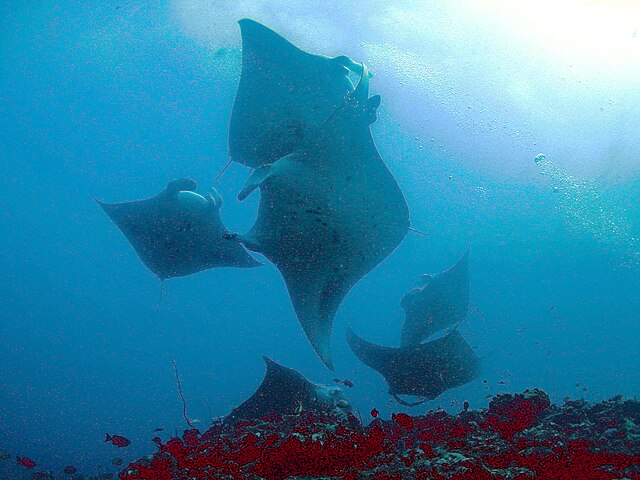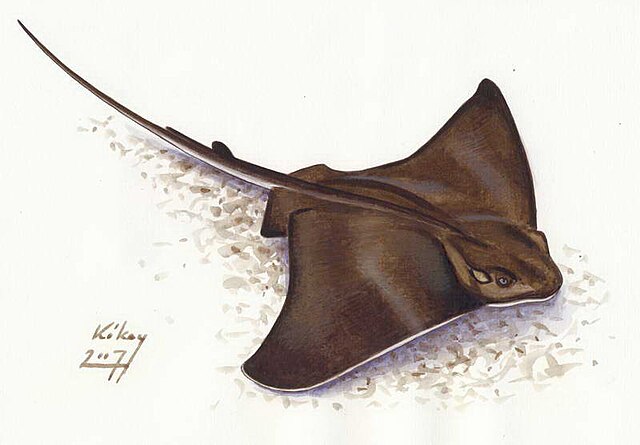Manta rays are large rays belonging to the genus Mobula. The larger species, M. birostris, reaches 7 m (23 ft) in width, while the smaller, M. alfredi, reaches 5.5 m (18 ft). Both have triangular pectoral fins, horn-shaped cephalic fins and large, forward-facing mouths. They are classified among the Myliobatiformes and are placed in the family Myliobatidae. They have the largest brains and brain to body ratio of all fish, and can pass the mirror test.
Manta ray
Dorsal view of M. birostris showing shoulder markings
Manta alfredi with mouth closed, cephalic fins rolled and ventral surface showing distinctive markings
M. alfredi group in the Maldives
Batoidea is a superorder of cartilaginous fishes, commonly known as rays. They and their close relatives, the sharks, comprise the subclass Elasmobranchii. Rays are the largest group of cartilaginous fishes, with well over 600 species in 26 families. Rays are distinguished by their flattened bodies, enlarged pectoral fins that are fused to the head, and gill slits that are placed on their ventral surfaces.
Batoidea
Spotted eagle ray, Aetobatus narinari
Early Eocene fossil stingray Heliobatis radians
Image: Myliobatis aquila sasrája








